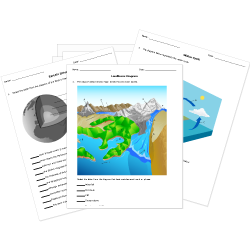A tsunami is a series of large, fast-moving ocean waves. A tsunami is often caused by an earthquake in the ocean floor. At first, tsunami waves may not appear dangerous. They may pass under a ship floating on the ocean and go unnoticed by the crew. This is because the distance between waves can be many miles long. The wave may only be a few feet high in the deep ocean waters. As the tsunami travels over the shallow ocean floor approaching land, its height grows and speed slows. The waves then collapse upon the land, flooding the low-lying coast. Tsunami waves may be ten, fifty, or even a hundred feet high when they make landfall. Multiple waves crash along the coast as the tsunami makes impact. These waves may come minutes or even hours apart.
Which of the following will most likely lower the risk of harm to people in areas where tsunamis may hit land?
-
Sound warning sirens when the first tsunami wave makes landfall.
-
Monitor for ocean floor earthquakes and warn people to move to high ground.
-
Use sandbags to build low walls along shorelines where tsunamis may hit land.
-
Ask crews of ships at sea to report any changes in wave height or wave speed.






